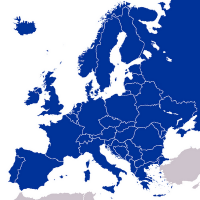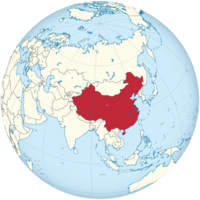Difference between revisions of "Atheism and Alzheimer's disease"
Conservative (Talk | contribs) (→Religious practices and the progression of Alzheimer's disease) |
Conservative (Talk | contribs) (→Atheist controlled mainland China and Alzheimer's disease) |
||
| Line 42: | Line 42: | ||
*[https://www.washingtonpost.com/blogs/worldviews/wp/2013/05/23/a-surprising-map-of-where-the-worlds-atheists-live/ A surprising map of where the world’s atheists live], ''Washington Post'' By Max Fisher and Caitlin Dewey May 23, 2013</ref> ]] | *[https://www.washingtonpost.com/blogs/worldviews/wp/2013/05/23/a-surprising-map-of-where-the-worlds-atheists-live/ A surprising map of where the world’s atheists live], ''Washington Post'' By Max Fisher and Caitlin Dewey May 23, 2013</ref> ]] | ||
| − | [[China]] has the world's largest [[atheism|atheist]] population.<ref>[http://www.thechapmans.nl/news/Atheist.pdf Top 50 Countries With Highest Proportion of Atheists / Agnostics (Zuckerman, 2005)]</ref><ref>[https://www.washingtonpost.com/blogs/worldviews/wp/2013/05/23/a-surprising-map-of-where-the-worlds-atheists-live/ A surprising map of where the world’s atheists live], ''Washington Post'' By Max Fisher and Caitlin Dewey May 23, 2013</ref> | + | [[China]] has the world's largest [[atheism|atheist]] population.<ref>[http://www.thechapmans.nl/news/Atheist.pdf Top 50 Countries With Highest Proportion of Atheists / Agnostics (Zuckerman, 2005)]</ref><ref>[https://www.washingtonpost.com/blogs/worldviews/wp/2013/05/23/a-surprising-map-of-where-the-worlds-atheists-live/ A surprising map of where the world’s atheists live], ''Washington Post'' By Max Fisher and Caitlin Dewey May 23, 2013</ref> China practices [[state atheism]] (see: [[China and atheism]]). |
[[East Asia]] contains about 25 percent of the world’s population. China’s population represents 20 percent of the people on earth.<ref>[http://www.sbts.edu/wp-content/uploads/sites/5/2015/10/Pages-from-SBJT-V15-N2_Terry.pdf The Growth of Christianity in East Asia]</ref> | [[East Asia]] contains about 25 percent of the world’s population. China’s population represents 20 percent of the people on earth.<ref>[http://www.sbts.edu/wp-content/uploads/sites/5/2015/10/Pages-from-SBJT-V15-N2_Terry.pdf The Growth of Christianity in East Asia]</ref> | ||
Revision as of 05:50, February 11, 2019

Alzheimer's disease is "characterised by loss of neurons and synapses in the cerebral cortex and certain subcortical regions. This loss results in gross atrophy of the affected regions, including degeneration in the temporal lobe and parietal lobe, and parts of the frontal cortex and cingulate gyrus.[1] Some of the primary symptoms of alzheimer's disease are: memory problems, mood swings, emotional outbursts, brain stem damage which impairs function in the heart, lungs plus causes disruption of various other bodily processes.[2]
The current global atheist population mostly resides in East Asia (particularly China) and in secular Europe/Australia primarily among whites.[3] See: Global atheism
Alzheimer's disease is more common among the elderly and in terms of global atheism and aging populations, global atheism is facing significant challenges in terms of aging populations in East Asia and Europe and atheism is expected to shrink in terms of its market share of the world's population (see: Desecularization).
Contents
Religious practices and the progression of Alzheimer's disease
WebMd reported in 2005, "Religious practices and spirituality may slow the progression of Alzheimer's disease."[4]
The abstract for the 1990 journal article Spirituality, religion, and Alzheimer's disease published in the Journal of Health Care Chaplaincy indicates:
| “ | The chaplain's ministry to persons with dementia, often of the Alzheimer's type, is vitally relevant to their clinical well-being. No chaplain should even think that because someone is demented, they can no longer be reached spiritually. While few scientific studies exist, clinical experience and anecdotal accounts suggest that selected pastoral interventions can enhance the quality of life of the mildly, moderately, and even severely demented individual.[5] | ” |
Effects of Spiritual Group Therapy on Caregiver Strain in Home Caregivers of the Elderly with Alzheimer's Disease
The abstract of the 2017 journal article Effects of Spiritual Group Therapy on Caregiver Strain in Home Caregivers of the Elderly with Alzheimer's Disease published in the Archives of Psychiatric Nursing indicated:
| “ | Care of patients with Alzheimer's disease is one of the most difficult types of care that exposes the caregiver to a high level of care strain. The present research aimed at determining the effect of spiritual care on caregiver strain of the elderly with Alzheimer's disease.
Spiritual care can reduce care strain in home caregivers of the elderly with Alzheimer's disease.[6] |
” |
Secular Europe and Alzheimer's disease
See also: Secular Europe

If left unchecked, roughly 9 million people in the EU are expected to have dementia by 2030 – approaching twice the population of Denmark.[7]
From a global perspective, Europe is more secular/atheistic than the rest of the world although it does have a considerable amount of religious immigrants who have significantly higher birth rates (see: Secular Europe and Atheist population and Global atheism).
According to Politico:
| “ | Alzheimer’s disease and related dementias are putting an enormous socio-economic burden on healthcare systems, families, and caregivers. Populations in Europe are ageing, and with this will grow the prevalence of Alzheimer’s disease. If left unchecked, roughly 9 million people in the EU are expected to have dementia by 2030 – approaching twice the population of Denmark.[8] | ” |
According to the abstract of the 2017 journal article Prevalence and incidence of Alzheimer's disease in Europe: A meta-analysis published in the journal Neurologia:
| “ | The prevalence of Alzheimer's disease in Europe was estimated at 5.05% (95% CI, 4.73-5.39). The prevalence in men was 3.31% (95% CI, 2.85-3.80) and in women, 7.13% (95% CI, 6.56-7.72), and increased with age. The incidence of Alzheimer's disease in Europe was 11.08 per 1000 person-years (95% CI, 10.30-11.89). Broken down by sex, it was 7.02 per 1000 person-years (95% CI, 6.06-8.05) in men and 13.25 per 1000 person-years (95% CI, 12.05-14.51) in women; again these rates increased with age.[9] | ” |
Atheist controlled mainland China and Alzheimer's disease
See also: China and atheism
China has the world's largest atheist population.[11][12] China practices state atheism (see: China and atheism).
East Asia contains about 25 percent of the world’s population. China’s population represents 20 percent of the people on earth.[13]
Razib Khan points out in Discover Magazine, "most secular nations in the world are those of East Asia, in particular what are often termed “Confucian societies.” It is likely therefore that the majority of the world’s atheists are actually East Asian."[14] See: Asian atheism and Global atheism
China and Alzheimer's disease
In 2017, the South China Morning Post indicated:
| “ | No health care problem looms larger in China than Alzheimer’s disease. It is the fastest-growing major disease on the mainland, with at least 9.5 million sufferers and perhaps as many undiagnosed cases. Almost a million Chinese are diagnosed every year with Alzheimer’s, with the number of new cases expected to rise sharply by around 2030.
Of the major diseases in China, Alzheimer’s also has the greatest mismatch between the number of patients and amount of specialised care available. [15] |
” |
See also
- Atheism and the brain
- Religiosity and larger frontal lobes
- Religious individuals and thicker cerebral cortices
- Atheism and autism
- Atheism and intelligence
- Atheism and health
- Atheism and obesity
- Atheism and cancer
References
- ↑ Neurodegeneration in Alzheimer's and Parkinson's
- ↑ Alzheimer's disease
- ↑ A surprising map of where the world’s atheists live, By Max Fisher and Caitlin Dewey, Washington Post, May 23, 2013
- ↑ Religion, Spirituality May Slow Alzheimer's, WebMD, 2005
- ↑ Spirituality, religion, and Alzheimer's disease. by SG1, Whitehouse PJ., Journal of Health Care Chaplaincy, 1999;8(1-2):45-57.
- ↑ [Effects of Spiritual Group Therapy on Caregiver Strain in Home Caregivers of the Elderly with Alzheimer's Disease] by Mahdavi B1, Fallahi-Khoshknab M2, Mohammadi F1, Hosseini MA1, Haghi M1., Archives of Psychiatric Nursing, 2017 Jun;31(3):269-273. doi: 10.1016/j.apnu.2016.12.003. Epub 2016 Dec 7.
- ↑ Addressing Alzheimer’s disease in Europe: What still needs to be done?, Politico, 2016
- ↑ Addressing Alzheimer’s disease in Europe: What still needs to be done?, Politico, 2016
- ↑ Prevalence and incidence of Alzheimer's disease in Europe: A meta-analysis by Niu H1, Álvarez-Álvarez I2, Guillén-Grima F3, Aguinaga-Ontoso I2., Neurologia. 2017 Oct;32(8):523-532. doi: 10.1016/j.nrl.2016.02.016. Epub 2016 Apr 26.
- ↑
- Top 50 Countries With Highest Proportion of Atheists / Agnostics (Zuckerman, 2005)
- A surprising map of where the world’s atheists live, Washington Post By Max Fisher and Caitlin Dewey May 23, 2013
- ↑ Top 50 Countries With Highest Proportion of Atheists / Agnostics (Zuckerman, 2005)
- ↑ A surprising map of where the world’s atheists live, Washington Post By Max Fisher and Caitlin Dewey May 23, 2013
- ↑ The Growth of Christianity in East Asia
- ↑ Most atheists are not white & other non-fairy tales, Discover magazine
- ↑ China’s millions of Alzheimer’s patients cannot wait any longer for specialised care, South China Morning Post, 2017
